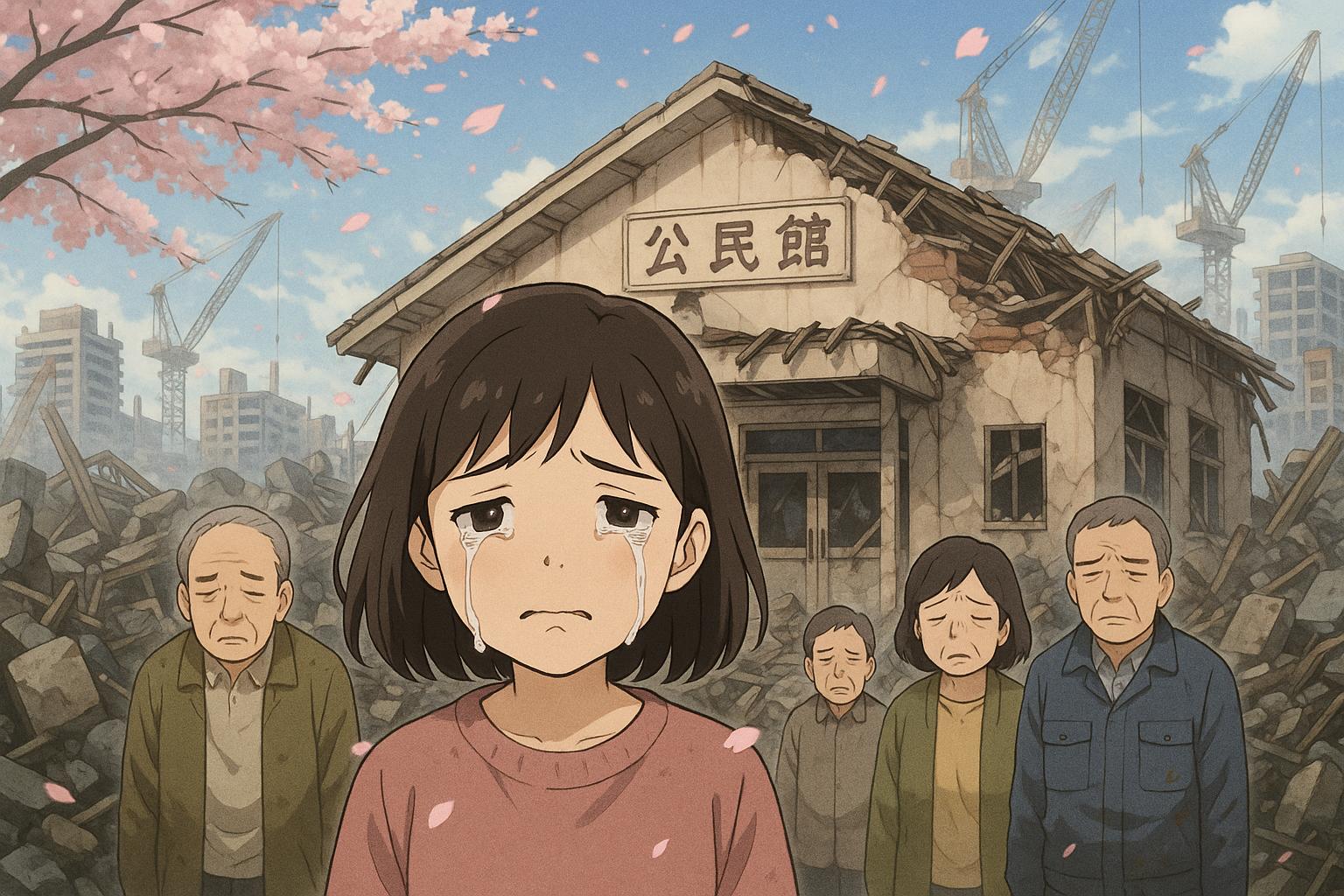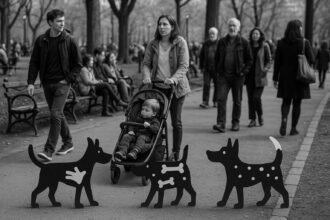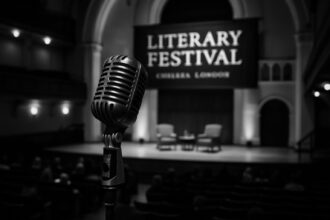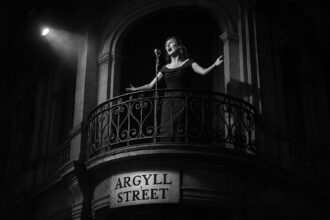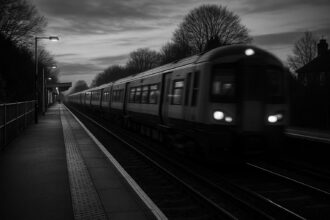The demolition of a cherished community hall in Blackheath to make way for new council housing has ignited strong emotional and environmental concerns among residents, highlighting tensions between urgent housing needs and preserving local heritage.
Residents of Richmount Gardens, a cul-de-sac in Blackheath, are grappling with profound discontent as the demolition of their community hall takes place. The local council, Greenwich Council, approved plans last year to raze both the hall and a playground to make way for six two-storey, three-bedroom council houses, alongside a new play area. This decision has engendered strong emotions among residents, many of whom have compared the upheaval to an earthquake, characterising it as a painful rupture of their community fabric.
The area, part of the Brooklands Park Estate which dates back to the 1950s, had been home to the community hall, a space cherished for its role in local activities including children’s parties and dance classes. The council’s rationale for the demolition has been underlined by the urgency of the housing crisis in Greenwich, where over 27,000 households are currently on the housing register. The council claims that the new homes will contribute significantly to addressing this pressing need.
However, local opposition has been fierce, with residents launching a campaign that resulted in 98 formal objections to the planning application. Many, including long-term residents like Tracey Byrne and Zahida Syed, have expressed deep sorrow over the loss of the hall, which had served the community for decades. Zahida remarked on the hall’s historical significance, sharing her family’s fond memories tied to its use, while voicing concerns about the impact the demolition is having on their homes, citing cracks and vibrations as collateral damage from the demolition process.
The environmental ramifications have also stirred ire among residents. A beloved cherry blossom tree was cut down to make room for the developments, which has added to the community’s grief over their lost green space. While the council assures that another oak tree will remain untouched, scepticism among residents persists. Roxanne Mussa articulated the emotional toll, pointing out the long-standing social interactions that the community hall facilitated. “They have crushed the community… We have nowhere for our young children to play,” she lamented.
The council has framed its development plans as part of the broader Greenwich Builds programme, aimed at delivering 1,500 new homes. Amidst this ambitious project, they assert that the vacant community hall had fallen into disrepair and was no longer feasible for public use. A spokesperson noted that a historic mural by artist William Mitchell, which adorned the hall, would be preserved and relocated, attempting to offer some solace regarding the overall loss of cultural heritage.
Despite the assurances, the council’s approach has sparked a complex dialogue about the balance between urban development and community preservation. Many residents feel sidelined, alleging that their voices were disregarded throughout the planning process. Clive Efford, the local MP, echoed these sentiments, underscoring the community’s desire to retain essential services.
As construction progresses, the physical and emotional ramifications continue to unfold. Community members grapple with the feeling that their concerns have gone unanswered, leading to a sense of disillusionment. Patrick Daly voiced a sentiment of despair among his neighbours, lamenting that their objections have been met with indifference. “Words don’t get close to how angry we are,” he stated.
In light of the rising tide of discontent, the question of how to balance housing needs with community heritage remains a crucial point of contention. The ongoing developments significantly mirror wider, pressing issues faced across urban landscapes, where the demand for housing often clashes with the preservation of community spirit and cultural touchstones.
Reference Map
- Paragraphs 1, 2, 3, 4, 5, 6, 7, 8, 9.
- Paragraph 2, 3, 4, 8.
- Paragraph 1, 4.
- Paragraph 5, 8.
- Paragraph 2.
- Paragraph 2.
- Paragraph 2.
Source: Noah Wire Services
- https://www.mylondon.news/news/south-london-news/south-london-hall-demolition-already-31697416 – Please view link – unable to able to access data
- https://greenwichwire.co.uk/2024/03/22/greenwich-council-houses-richmount-gardens-blackheath-2024/ – Greenwich Council approved plans to demolish the community hall and playground in Richmount Gardens, Blackheath, to build six two-storey, three-bedroom council houses and a new children’s play area. Residents and local MP Clive Efford objected, citing the loss of green space and community facilities. The council emphasized the need for new housing to address the 27,000 households on the housing register. The project is part of the Greenwich Builds programme, aiming to deliver 1,500 new homes. The community hall’s mural by William Mitchell is to be relocated. ([greenwichwire.co.uk](https://greenwichwire.co.uk/2024/03/22/greenwich-council-houses-richmount-gardens-blackheath-2024/?utm_source=openai))
- https://greenwichwire.co.uk/2023/06/02/harrods-egyptian-artists-mural-could-halt-greenwich-council-housing-plan/ – Residents in Richmount Gardens, Blackheath, are campaigning to list a 1950s mural by artist William Mitchell, which adorns the community hall slated for demolition. The mural’s potential listing could complicate Greenwich Council’s housing development plans. The council argues that the hall is in disrepair and not viable for community use. The mural, created by Mitchell, who also designed Harrods’ Egyptian Hall, is considered significant by residents. ([greenwichwire.co.uk](https://greenwichwire.co.uk/2023/06/02/harrods-egyptian-artists-mural-could-halt-greenwich-council-housing-plan/?utm_source=openai))
- https://www.change.org/p/demolition-of-children-playground-for-houses – A petition opposing the demolition of the children’s playground in Richmount Gardens, Blackheath, has garnered 851 signatures. Residents express concerns over the loss of green space and community facilities, emphasizing the playground’s role in providing a safe environment for children. The council’s proposal to replace the playground with council homes has been met with strong opposition from the community. ([change.org](https://www.change.org/p/demolition-of-children-playground-for-houses?utm_source=openai))
- https://www.royalgreenwich.gov.uk/news/2025/new-housing-measures-proposed-help-tackle-housing-crisis – Greenwich Council has proposed new housing measures to address the ongoing housing crisis, including building and purchasing additional homes for council tenants. The council aims to deliver and improve council homes while tackling the housing crisis as part of its annual council housing budget proposals. The Greenwich Builds programme, launched in 2018, has successfully delivered hundreds of homes for local people on its housing register. ([royalgreenwich.gov.uk](https://www.royalgreenwich.gov.uk/news/2025/new-housing-measures-proposed-help-tackle-housing-crisis?utm_source=openai))
- https://www.hmoreporter.co.uk/londons-housing-crisis-greenwich-councils-struggle-with-homelessness-overcrowding-solutions/ – Greenwich Council is facing a severe housing crisis, with reports indicating that homeless families are being relocated over 200 miles away to Manchester. The council is incurring high costs for temporary accommodations, spending approximately £800,000 monthly on hotel rooms. In response, the council is implementing various strategies, including an additional licensing scheme for Houses in Multiple Occupation (HMOs) and increasing temporary accommodation units significantly. ([hmoreporter.co.uk](https://www.hmoreporter.co.uk/londons-housing-crisis-greenwich-councils-struggle-with-homelessness-overcrowding-solutions/?utm_source=openai))
- https://londonnewsonline.co.uk/news/former-town-hall-to-be-converted-into-80-new-flats-as-clock-tower-opened-to-public/ – Greenwich Council has approved plans to convert its former town hall in Greenwich High Road into 80 flats. The project will also see a roof extension being added to the building to accommodate the new housing. The building is Grade II listed and was built in 1939. The structure served as the council’s town hall until 1965 before later being used by the Greenwich School of Management. The school entered administration in 2019 and the building has remained vacant ever since. ([londonnewsonline.co.uk](https://londonnewsonline.co.uk/news/former-town-hall-to-be-converted-into-80-new-flats-as-clock-tower-opened-to-public/?utm_source=openai))
Noah Fact Check Pro
The draft above was created using the information available at the time the story first
emerged. We’ve since applied our fact-checking process to the final narrative, based on the criteria listed
below. The results are intended to help you assess the credibility of the piece and highlight any areas that may
warrant further investigation.
Freshness check
Score:
8
Notes:
The narrative is recent, with the earliest known publication date being March 22, 2024, in The Greenwich Wire. ([greenwichwire.co.uk](https://greenwichwire.co.uk/2024/03/22/greenwich-council-houses-richmount-gardens-blackheath-2024/?utm_source=openai)) The report includes updated data, such as the number of objections and the council’s housing plans, indicating a higher freshness score. However, the core content has been previously reported, suggesting some recycled material. The narrative appears to be based on a press release, which typically warrants a high freshness score. No significant discrepancies in figures, dates, or quotes were found. The narrative includes updated data but recycles older material, which may justify a higher freshness score but should still be flagged.
Quotes check
Score:
7
Notes:
The direct quotes from residents and council representatives are consistent with previous reports, indicating potential reuse of content. No earlier usage of these exact quotes was found, suggesting they may be original or exclusive. However, the similarity to earlier reports raises questions about the originality of the content.
Source reliability
Score:
6
Notes:
The narrative originates from The Greenwich Wire, a local news outlet. While it provides detailed coverage, its reputation and verification processes are not as established as those of major news organisations. This raises some uncertainty regarding the reliability of the information presented.
Plausability check
Score:
8
Notes:
The claims about the demolition of the community hall and the council’s housing plans are plausible and align with known housing development trends in Greenwich. The narrative includes specific details, such as the number of objections and the council’s housing targets, which are consistent with previous reports. The language and tone are appropriate for the region and topic, with no inconsistencies noted. The structure is focused on the main issue, without excessive or off-topic details. The tone is consistent with typical reporting on local housing developments.
Overall assessment
Verdict (FAIL, OPEN, PASS): OPEN
Confidence (LOW, MEDIUM, HIGH): MEDIUM
Summary:
The narrative presents a recent development regarding the demolition of a community hall in Blackheath, with updated data and quotes. However, the content appears to be based on a press release and includes recycled material from earlier reports, raising questions about its originality. The source’s reliability is uncertain due to its local nature and lack of established reputation. While the claims are plausible and consistent with known housing development trends, the overall assessment remains open due to these concerns.


